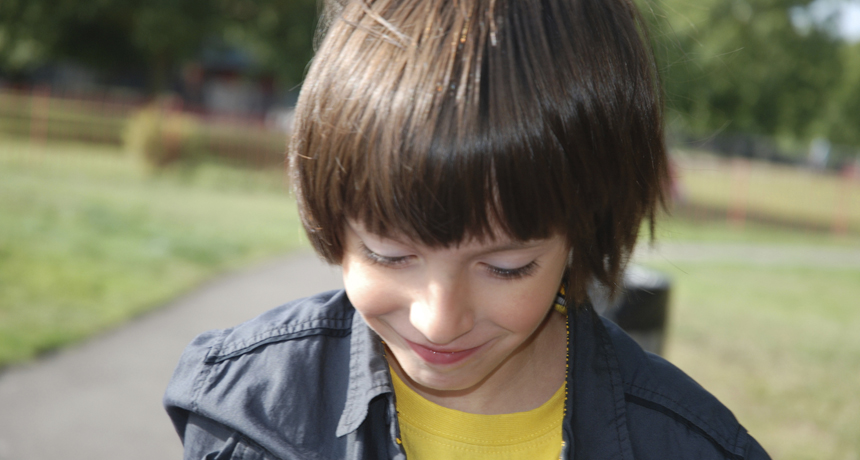Why boys face higher autism risk
Girls appear to require more genetic changes than boys to develop autism

A new study finds that boys appear less able to withstand the effects of gene mistakes that have been linked with autism.
natasa778/iStockphoto
Roughly one in every 88 U.S. children will develop some form of autism. It’s a type of brain disorder. Boys and girls are not equally affected, however. Boys develop the brain disability at four times the rate seen in girls. A new study finds genetic clues that may explain this difference. Harmful changes in certain genes have been linked to the disorder. And boys appear to need far fewer of them to develop autism.
The gene changes are known as mutations. In some still mysterious way, females may be better able to protect themselves from these mutations, scientists now suspect.
Evan Eichler is a geneticist at the University of Washington School of Medicine in Seattle. Small studies had hinted that girls could endure far more harmful autism-linked mutations than boys before developing the disease. So he and colleagues decided to probe whether this association held up in a bigger group of people diagnosed with autism or with other disorders that trace to changes in how the brain develops.
To do this, the team tapped into two large collections of genetic data. One came from more than 15,000 people with intellectual disabilities. A second came from 762 families, each with an autistic child.
Mutations can occur for a number of reasons. They also take a number of different forms. For instance, one “letter” in the long DNA code may inappropriately substitute for another. Sometimes large chunks of a gene’s DNA may go missing. This is known as a deletion error. Other times, chunks of the DNA may repeat inappropriately.
Eichler’s team suspects that parents of the kids in the two groups it studied had such mutations and then passed them along to their children.
On average, females in both of the studied groups had more harmful mutations than did the males. This was true for large chunks of missing or repeated DNA as well as for small, single letter mutations. “No matter what class of mutation we looked at, females had more,” Eichler says.
Consider data from the smaller group, which was restricted to families with an autistic child. Here, females with autism had double the number of large deletions or repeats that males had. When the analysis was restricted to genes that are probably involved in brain development, these females had mutations in three times as many of these as did the males.
In a different analysis, the same researchers looked at which parent’s DNA had contributed large repeats or deletions. And, overall, such mutations came from mom 57 percent of the time. Yet regardless of a mutations’ source, “a female is going to require more of these hits to push her to a disease state,” Eichler concludes.
His team describes its findings in the March 6 American Journal of Human Genetics.
The new findings are especially convincing because they come from such a large group of people with brain disorders, including autism, says Ivan Iossifov. A human geneticist, he works at Cold Spring Harbor Laboratory in New York. Still, he notes, scientists have no idea why females may be more resilient to these mutations — or why males seem especially vulnerable.
Power Words
autism A set of developmental disorders — collectively known as autism spectrum disorders — that are characterized by problems with social interactions and communication.
data Facts and statistics collected together for analysis but not necessarily organized in a way that give them meaning.
development (in biology) The growth of an organism from conception through adulthood, often undergoing changes in chemistry, size and sometimes even shape.
diagnose To analyze clues or symptoms in the search for their cause. The conclusion usually results in a diagnosis — identification of the causal problem or disease.
disability A physical or mental handicap that affects a person’s movements, senses, activities or other functions. It may be caused by an injury, disease or birth defect.
DNA (short for deoxyribonucleic acid) A long, spiral-shaped molecule inside most living cells that carries genetic instructions. In all living things, from plants and animals to microbes, these instructions tell cells which molecules to make.
gene A segment of DNA that contains the instructions for making a protein. Those proteins govern the behavior of a cell — or large groups of cells. Offspring inherit genes from their parents. Genes influence how an organism looks and behaves.
genetic Having to do with chromosomes, DNA and the genes contained within DNA. The field of science dealing with these biological instructions is known as genetics.
mutation Some change that occurs to a gene in an organism’s DNA. Some mutations occur naturally. Others can be triggered by outside factors, such as pollution, radiation, medicines or something in the diet.







